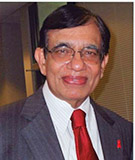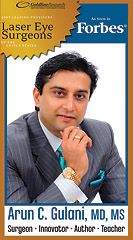
DON’T IGNORE THESE SIGNS AND SYPMTPOMS – Part I

Now that the New Year celebrations are over, let’s get back to business. Early detection and/or prevention of diseases are the keys to good health. Let me give you a couple of examples. My sister calls me from India one day to enquire about my health and well-being. She casually mentions that she felt a little thickening of the skin but no lump on the bottom of her right breast. “Oh, I don’t think this is anything, a bug may have bitten me, I feel fine,” she said. I took a deep breath and said, “Sis, consult a surgeon there and get a biopsy of the spot as quickly as you can.” Cancer of the breast, a common disease in women, often starts like this — a benign- looking lesion, a little induration on the skin. Indeed, it turned out to be just that for which she later underwent mastectomy followed by chemotherapy.
Another younger relative of mine came to consult me during my last visit to India because of his repeated upper respiratory infections. He also said, “You know, I drive a two wheeler, and when I go fast, the draft that hits my chest make me a little windless.” His general practitioner was content to call this upper respiratory infections and allergies but it turned out he was suffering from a congenital heart disease called Atrial Septal Defect. After a full cardiac workup followed by open heart surgery to close the defect, he is now back to normal. But a 61-year-old- recently-retired banker wasn’t so lucky. One day, he developed heartburns out of the blue and started taking antacids. After two days, it got worse. He was taken to the local emergency room where he had a cardiac arrest and died!
So, what do we learn from these instances? If we can diagnose a disease at its earliest stage, then treatment is easy and a full recovery is possible but undetected a disease like cancer can progress quickly to a point of no return. And yet many people wait, why? The barriers that prevent them seeking immediate medical attention include prior obligations, hospital expenses, inconveniencing others and reluctance to accept a serious illness may have invaded your body. And yet we must take the right action.
Here are some of the red flag symptoms you shouldn’t ignore:
-
Chest discomfort: Crushing chest pain, chest tightness or squeezing, cold sweats, feeling of dread, new onset of heartburn, etc., may be the sign of an impending or actual heart attack. You must reach the nearest emergency room of a hospital right away, so you can get life-saving therapy quickly. Women often feel only vague chest discomfort which they can pass off as indigestion, so beware.
"There is the classic misconception of the ‘Hollywood heart attack’," says Dr. Christopher Cannon, professor of Cardiology at Harvard Medical School. “The stereotypical heart attack stems from what people see in the movies — a middle-aged man suddenly clutches at his chest, complains of agonizing pain, then slumps to the floor. However, most people with heart attacks actually describe a diffuse pressure or squeezing. A real heart attack can be very subtle."
-
Difficulty in breathing that worsens while walking or lying down, especially when associated with tenderness and swelling of one leg or coughing up blood in the sputum. This could be related cardiac disease or clots in the lungs and must be attended to quickly.
-
Symptoms of stroke or mini stroke (TIA)
When the blood flow to the brain is interrupted, the symptoms can appear suddenly. Immediate life-saving treatment will reduce the brain damage and save the patient from crippling paralysis later. American Society of Neurology has coined the term FAST to help you to spot the telltale signs of a stroke. And they are:
F: Face: Ask the person to smile and see if it’s uneven and one side drooping.
A: Arms: Does one arm drift down when asked to raise both arms, suggesting weakness of the arm.
S: Speech: Does it sound slurred or unusual?
T: Time is of essence, so note the time when symptoms first started and call the local emergency room.
In addition, some patients may have headache, confusion and disorientation, etc. One young university student that I know developed severe headache one day but didn’t seek medical attention and was found in coma in her dorm later. The diagnosis was “ruptured cerebral aneurism with severe cerebral hemorrhage,” and unfortunately she didn’t make it. So, don’t ignore any significant headache, this can be a serious symptom.
To be continued …
M.P. Ravindra Nathan, M.D., is a cardiologist and Emeritus Editor of AAPI Journal. His book “Stories from My Heart” was recently released. (www.amazon.com or www.bn.com).
EYE CARE
‘New Carpet over Broken Tiles’; Reversing Past Radial Keratotomy (RK) Surgery

“New Carpet over Broken Tiles”; the title of my lecture at the World Conference for eye surgeons held in Hawaii recently.
An eye surgery to remove glasses, popularized in the 1980s comprised of radial cuts in the cornea (front clear viewfinder of the eye). If you think about this, the cornea then can be compared to a set of broken tiles (held together) and a specialized laser technique (Corneoplastique) can improve the vision despite these broken tiles with a new simulated carpet of epithelium.
Thousands of patients who underwent Radial Keratotomy (RK) in the past are seeing their vision deteriorate either from a progressive farsightedness over time or associated aging situations such as cataracts.
Patients with previous RK face a challenging situation in eye surgery not only because of surgical complexity but also due to patient expectations as people who had these surgeries are typically “early adapters.” Fortunately, with technology today, these patients can once again see without glasses.
RK is a type of eye surgery used to correct Myopia (nearsightedness). It works by changing the shape of the cornea (flattens the shape) –transparent part of the eye that covers the iris and the pupil (Ref. KhaasBaat article: Lasik).
History of RK dates back to 1936 when Japanese ophthalmologist Tsutomu Sato applied sharp slits in the cornea. In 1974, Svyatoslav Fyodorov in Russia (former Soviet Union) removed glass from the eye of a boy who had been in an accident. When Dr. Fyodorov performed an operation resulting in numerous radial incisions like the spokes of a wheel on the cornea, the boy’s vision improved and he did not need glasses anymore. A diamond knife was invented to replicate the technique successfully. Many American eye surgeons journeyed to Moscow to learn and modify the surgery into a safer and more accurate procedure before its introduction in the United States in 1978.
RK successfully treated people with low to moderate myopia and could also be paired with specific incisions to correct astigmatism.
With the advent of Lasik in 1995, RK was slowly relegated to history simply because Lasik is generally more safer, predictable and accurate since it involved the micron-presicion Excimer Laser rather than hand-held blades as in RK.
A 10-year study of RK patients shows that patients who were nearsighted (with steep corneas) before RK surgery, over time undergo continued flattening of their corneas so they become farsighted. Since this happens when most of them have become farsighted with age for reading (Presbyopia article: Khaasbaat), it is a double whammy. These patients can be corrected with advanced Lasik techniques today.
In some patients, despite a well-performed RK surgery, normal aging and cataracts affect vision. Today, even these patients can be helped with laser cataract techniques and new generation lens implants.
Additionally, new technology that firms up the cornea (Collagen Cross Linking) and prevents it from further flattening can be used with Lasik or cataract surgery.
Thus, patients who have had RK surgery and enjoyed their vision freedom need not despair. Ask your eye doctor for state-of-the-art options and get back to the vision without glasses – once again!
Arun C. Gulani, M.D., M.S., is director and chief surgeon of Gulani Vision Institute in Jacksonville. He can be reached at [email protected] or visit www.gulanivision.com